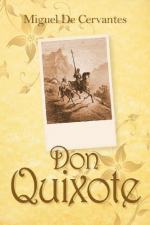|
This section contains 8,106 words (approx. 28 pages at 300 words per page) |

|
SOURCE: Ziolkowski, Eric J. “Don Quijote's Windmill and Fortune's Wheel.” Modern Language Review 86, no. 4 (October 1991): 885-97
In the following essay, Ziolkowski considers what the windmill in Don Quixote represents as a symbol.
The knight's combat with the windmills in Part i, Chapter 8, of Don Quijote de la Mancha (1605) is the most famous episode in what many view as the first and prototypical modern novel, a work that has been the most widely translated, published, read, and discussed text of that genre in literary history. By the time Miguel de Cervantes wrote the Quijote's second part (1615) he was evidently aware that the windmill adventure was the most favoured of all from the first part. Early in the sequel, when Don Quijote asks the bachelor Sansón Carrasco which of his adventures have become the most famous (‘las que más se ponderan’),1 the first one Carrasco mentions is...
|
This section contains 8,106 words (approx. 28 pages at 300 words per page) |

|


